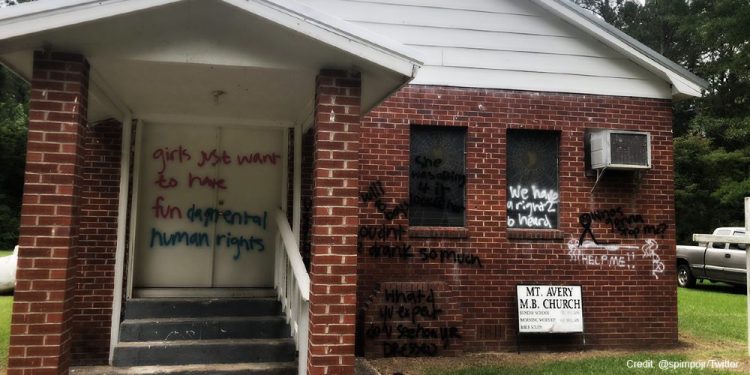There’s no question that the news media focus on violence in our society. That is “news” – right?
But do the headlines report all kinds of violence? Sometimes that’s a valid question. One area that might fit that would be the ongoing, and increasing, violence against churches, mainly Catholic churches. How often do you read or hear about that?
The latest report issued by the Center for Religious Liberty at the Family Research Council (FRC) addressed the growing assaults against churches. The study said the increase “contributes to an environment of hostility toward Christianity.”
The study showed that there were 69 attacks against churches and places of worship during the first three months of this year compared with 24 during the same period last year.
That’s a 288% increase. These attacks ranged across 29 states and the “reasons” for them were broad, from activism to just senseless acts of destruction. The threats and attacks included arsons, bomb threats, vandalism and sacrilege.
The author of the report, Arielle Del Turco, is assistant director of the Center for Religious Liberty at the FRC. As reported in The Wanderer, the report stated that “American churches are increasingly bearing the brunt of anger and aggression, whether from political or other motivations.”
The report shows that the number of church attacks this year is the highest in six years, already exceeding the total in 2018 and 2020. The month of January this year alone, had more attacks than any single month in the last five years.
When we’re talking about attacks, we are really talking about everything from pure vandalism to severe damage and threats. There has been spray painting of building facades, statues, signs and even the interiors of the churches themselves in addition to actual church burnings.
Just between January and March, there were three bomb threats, including a pipe bomb discovered inside the 127-year-old St. Dominic Catholic Church in Philadelphia.
The report showed that between January 2018 and March 2023, there were 543 attacks on 517 separate churches. The attacks include church burnings, along with vandalism, other arson, gun- related incidents, 14 bomb threats and 25 miscellaneous acts of aggression.
It’s interesting to note that the increase of attacks seems to parallel news incidents – for example, after the Supreme Court Dobbs decision, after Black Lives Matter riots and after certain political actions – for example, transgender legislation recently passed in Kentucky.
It’s not surprising that there is disagreement between Democrats and Republicans on this issue, with Democrats accused of being too lax on enforcement concerning the violence.
In January, the GOP-controlled U.S. House, passed H. Con. Res.3, which noted that abortion extremists had “defaced, vandalized, and caused destruction to over 100 pro-life facilities and churches in 2022 – yet the Biden administration did nothing to take action in response.”
The Senate has taken no action on the bill.
With the election upcoming and political issues taking over headlines, the church violence problem will continue. Whether or not it makes the headlines will depend on the politics of the reporters, the editors and the newspapers themselves.
Follow Barbara Simpson on Facebook.
Content created by the WND News Center is available for re-publication without charge to any eligible news publisher that can provide a large audience. For licensing opportunities of our original content, please contact licensing@wndnewscenter.org.





Thank the Hungarian devil soro’s for funding these attacks an applesauce Biden an the democrat party .
https://www.counton2.com/news/local-news/berkeley-county-news/several-statues-of-mary-vandalized-at-goose-creek-catholic-church/amp/
Mother’s day hate crime. Thoughbits never called a hate crime. And it’s only vandalism, not desecration, further diminishing the crime.